This project is made possible through the partnership of WATER CHARITY and the NATIONAL PEACE CORPS ASSOCIATION. ![]()
This project has been completed. To read about the conclusion, scroll down the page.
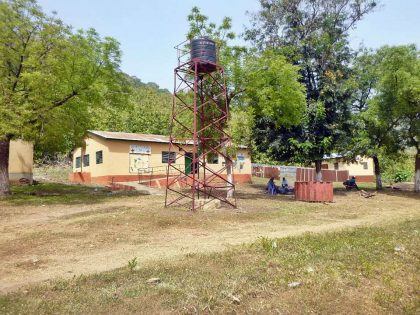 Location
Location
Kemeni, Centrale Region, Togo, West Africa
Community Description
Kemeni is located 35 kilometers north of Sokode, the regional capital of the Centrale region near the Kara region border. This community of 2,300 is situated at the base of a series of low-lying mountains, part of the Atakora Pan-African orogeny, comprised of schist and quartzite bedrock material. The ancestral site of Kemeni was originally established on the nearby hilltops for protection when the region’s diverse ethnic groups were competing for land and water resources, and the taking of prisoners as slaves was common. The inhabitants of Kemeni today are mostly of Molla ethnicity, Muslim and Kotokoli speaking.
The community is comprised of seven separate small villages – extended family units headed by a chief, in addition to four sedentary Fulani settlements. Most are farmers cultivating the standard Togolese crops: maize, peanuts, beans and yams with a budding cashew plantation initiative recently begun as a hopeful cash crop, along with the production of red palm oil, a common cooking oil produced throughout Togo from the outer covering of the oil palm nut. Small animal livestock raising is common (mainly goats and sheep) though in an unconfined manner while the Fulani manage cattle.
The NGO, Plan International, has several community outreach programs in education and youth development. There are presently no deep borehole wells in the community through a shallow borehole well was recently installed in one of the Fulani villages. Water scarcity exists during the dry period which typically extends from January to the start of the rainy season in June. The health clinic was built initially as a “case de santé,” or a very simple two-room community health “hut” in the early 2000s, later adopted and expanded by the Ministry of Health into a government-supported health center. The clinic is staffed by a head nurse and two midwives. As with all the first-tier government health clinics, a member of the community heads the financial accounting for the clinic and pays the salaries of the two midwives from the clinic account. Clinic staff paid by the community are typically from the area, often the village itself. The clinic has electric power, so lighting is available for nighttime emergencies and births. The clinic sees on average 60 patients per month and assists in roughly 10 births a month. Malaria heads the list for the most common affliction followed by various infections, and gastrointestinal and respiratory diseases.
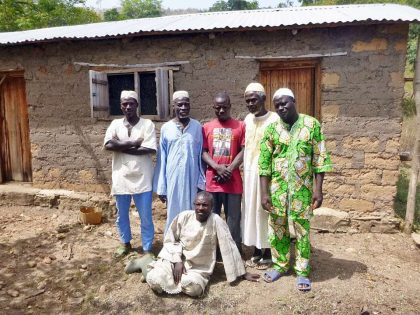 Problem Addressed
Problem Addressed
The only water source at the clinic is a shallow well originally equipped with a hand pump, later renovated by a Turkish NGO in 2016 with an immersible pump and a metal water tower to provide running water to the clinic, albeit only seasonally. While the depth of the well is unknown, the wells run dry during the dry season suggesting a maximum depth of around 10-12 meters. The clinic has indoor plumbing to two rooms though no delivery room discharge or floor drains. The staff and patients are required to fetch water from the few year-round sources in the village for roughly five months of the year when nearby water sources are depleted.
As with all health centers with both a lack of potable water and a year-round supply, water scarcity poses a serious problem for both the clinic staff and the patients, particularly for pregnant women and their female relatives as the later is required to hand-carry water to the clinic during the birth process. At present the afterbirth is hand-carried in basins to a pit outside posing a serious threat to both the midwives and the community, in general, should a patient carry a contagious blood disease.
Project Description
This project is to build a borehole well for the clinic. Under the guidance of the Department of Hydraulics and Sanitation’s regional office in Sokode and with support from the Ministry of Health regional director, who identified clinics with the most critical need, and a local drilling company, this project proposes to drill a 60- to 100-meter borehole well at the clinic, equipped with the following:
• An electric submersible pump
• a 4.5-meter high cement block water tower (will use the existing metal water towers which will be reinforced to support new water tanks)
• a 2 meter*3 polyethylene tank
• piping to the main intake valve at the clinic
The submersible pump will be run using electricity. The local drilling company selected, Plomberie Génerale de Réalisation de Forage, in operation since 1998 and based in Tchamba, has extensive experience drilling deep borehole wells throughout Togo and regionally in Burkina Faso, Benin, and Nigeria.
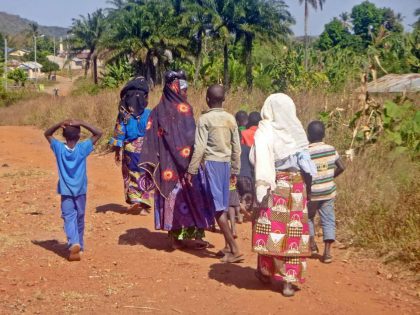 Community Organization
Community Organization
Kemeni Health Clinic
Project Impact
Number of people affected by the project: 2,500
Project Administration
This project will be managed by Anne Jeton, hydrologist and Returned Peace Corps Volunteer (RPCV), Burkina Faso (’82-’85) and Returned Peace Corps Response Volunteer (RPCRV), Togo (’16 -’17). Anne was sent to Togo on behalf of Water Charity to develop and administer new projects, and to coordinate with the Peace Corps.
Monitoring and Maintenance
Along with staff from the Department of Hydraulics and Sanitation who will monitor the well “indefinitely” (the well data becomes part of the official borehole well database, and as such is included in periodic field monitoring by technicians based in each Prefecture ), the contract for well drilling states a one-year guarantee provided by the drilling company. Problems with pump and borehole functioning are typically resolved in the first month of use.
Proper screening of the borehole and submersible pump placement relative to the static water table often mitigates the most common problems. However, any mechanical problems surfacing in the first year will be the responsibility of the drilling company.
The clinic staff will be responsible for maintaining a well repair account which will be funded from the sale of medicines. The clinic will decide a nominal fee for water use should the water account be insufficient, or the community will be asked to contribute directly to the costs.
Project Funding
This project has been funded by an anonymous donor.
Conclusion of Kemeni Clinic Borehole Water System Project – Togo
This project was managed by Anne Jeton, hydrologist and Returned Peace Corps Volunteer (RPCV), Burkina Faso (’82-’85) and Returned Peace Corps Response Volunteer (RPCRV), Togo (’16 -’17).
Project Name: Kemeni Health Clinic Borehole Well Water System, Centrale Region, Togo
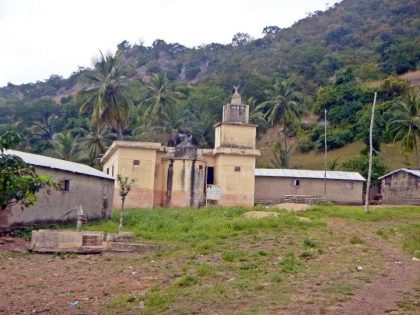 The purpose of the borehole water system project at the Kemeni health clinic was to address a lack of both potable and year-round water, either the absence of or nonfunctioning indoor plumbing and the lack of hygienic disposal of afterbirth blood and tissue.
The purpose of the borehole water system project at the Kemeni health clinic was to address a lack of both potable and year-round water, either the absence of or nonfunctioning indoor plumbing and the lack of hygienic disposal of afterbirth blood and tissue.
The maternity delivery room was equipped with a sink, faucet and running, potable water, and through additional outside funding; a floor drain and a discharge chamber, both plumbed to a dedicated subsurface cement-lined and ventilated septic tank. Delivery room waste (blood and tissue) can now be dispensed with directly in the maternity room in a safe and hygienic manner, rather than hand-carried by the midwives to an outdoor pit or in many cases poured into the latrines.
Thanks to additional outside funding and the high yield of the Kemeni well, the Kemeni Clinic water supply infrastructure was modified to provide the surrounding community with three more water access points built into a secondary water fountain, in addition to the standard two discharge pipes on the main water tower. This included upgrading to a 3,000-liter polyethylene water tank, a more powerful submersible pump, and the construction of the secondary water tower and ancillary plumbing from the main water tower.
Following borehole drilling, a “pump test” was run to determine the well’s productivity and in turn the hydraulic properties of the aquifer. The pump was run for several hours at a rate like actual use and the declining water table (drawdown) was measured at regular intervals. The Kemeni borehole was drilled to a depth of 60 meters and has a yield of 6,000 liters/hour which is more than adequate to supply both the clinic needs and those of the surrounding households. The pump test also indicated a rapid refilling of the borehole, implying even when run at the maximum yield rate, the well should recover quickly and not result in significant lag times. Simply put, the hydraulic conditions of the well are favorable to insure a sustainable water supply for many years to come (assuming the system is well maintained).
Water samples from both the borehole well and the original clinic well were taken and sent to the Regional laboratory in Sokodé, the regional capital, for a complete microbial and inorganic compound analysis. The results of this analysis indicate zero presence of any of the disease-causing bacteria tested (E Coli, Salmonella, Fecal Streptococci, Enterococci and a general category of thermotolerant Coliforms) in the new borehole well.
Numerous visits were made during the well installation by the Water Charity Coordinator and the government hydrologist to oversee construction and to insure the clinic and community leaders understood the responsibilities associated with maintaining and insuring a sustainable water supply. A final visit by the Regional Director of hydraulics insured the borehole well and the associated delivery system met all the driller’s contract requirements and functionality.
An official technical opening concluded the project with a presentation by the driller on the borehole well components, brief discourses by the Department of Hydraulics Regional Director, village leaders, the Water Charity coordinator, and a representative from the regional ministry of health. As the representative for Water Charity and its donor(s), the Coordinator reinforced previously discussed themes of maintenance and upkeep through the active participation of a community water committee and a clinic repair account, to manage public access to the well in a non-disruptive manner to the clinic staff and patients, and most importantly to take responsible ownership of this valuable resource.
CONCLUSION AND IMPACT: 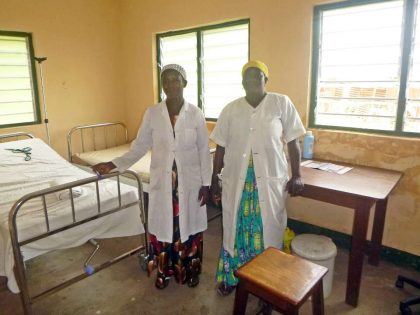
The Kemeni clinic serves a population of approximately 2,300 people, including the neighboring villages, who will directly benefit from a more hygienic health clinic. While clearly not all 2,300 people living in Kemeni will be accessing the well water for personal consumption, the community development liaison estimated perhaps as many as 1,500 inhabitants may utilize the community access points particularly with the addition of a second water fountain dedicated to the neighboring community and given the overall water scarcity in Kemeni during the dry season. The clinic anticipates seeing a rise in births as there is now running water and female relatives are no longer obliged to fetch water for the patient, in addition to an overall improvement in hygiene.
The clinic staff will use access to potable water to encourage better overall hygiene, as most of the disease-causing bacteria in the community water sources are due to fecal transmission by both animals and humans. The clinic staff, particularly the midwives and their assistants (which often include female relatives) will be better protected against blood-borne diseases as afterbirth material (blood and tissue) will be dispensed in a rapid and efficient manner, significantly reducing exposure.
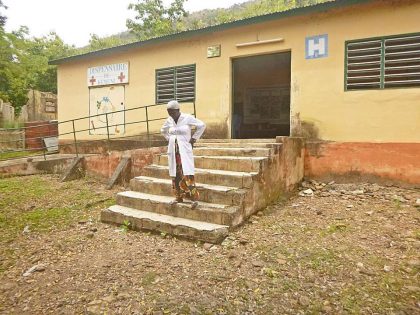 The Regional Director of the Department of Hydraulics stated in his technical report the Kemeni health clinic borehole well water system has fully succeeded in meeting both the local and national objectives for potable water. The Department of Hydraulics, the Ministry of Health and staff at each rural health clinic served by this project have repeatedly been astounded at the expediency with which funding was made available thus allowing work to begin within weeks of submitting the project request. Thank you, donors and Water Charity! The efficiency of work that followed was due in large part to the incredible efficiency, planning, and hard work by the local drilling company’s crew.
The Regional Director of the Department of Hydraulics stated in his technical report the Kemeni health clinic borehole well water system has fully succeeded in meeting both the local and national objectives for potable water. The Department of Hydraulics, the Ministry of Health and staff at each rural health clinic served by this project have repeatedly been astounded at the expediency with which funding was made available thus allowing work to begin within weeks of submitting the project request. Thank you, donors and Water Charity! The efficiency of work that followed was due in large part to the incredible efficiency, planning, and hard work by the local drilling company’s crew.
The Regional Director and the hydrogeologist at the Department of Hydraulics and Water in Sokodé also contributed their time, vehicle and expertise to insure all technical aspects of the project conformed to modern standards and have assured their continued presence as the borehole wells are now part of the national water database and monitoring program. Having the government of Togo involved from the beginning in this suite of health clinic projects, from the selection of health centers to technical oversight and continued monitoring by the Ministry of Water officials, has confirmed the importance of not doing community projects as isolated NGOs. This last point is critical to continued success as most water projects in Togo are implemented without government oversight, leading to a myriad of problems none the least being poor technical implementation and little to no continued oversight.
The Kemeni project was implemented in concert with five other health center water system projects, scattered over two districts – all of which were completed on schedule. The community of Kemeni offers its sincere thanks and gratitude to the donor(s) for this valuable water resource. As they say here “l’eau est la vie”. Water is life, and the cleaner the water the longer and more satisfying life will be! Un grand merci!